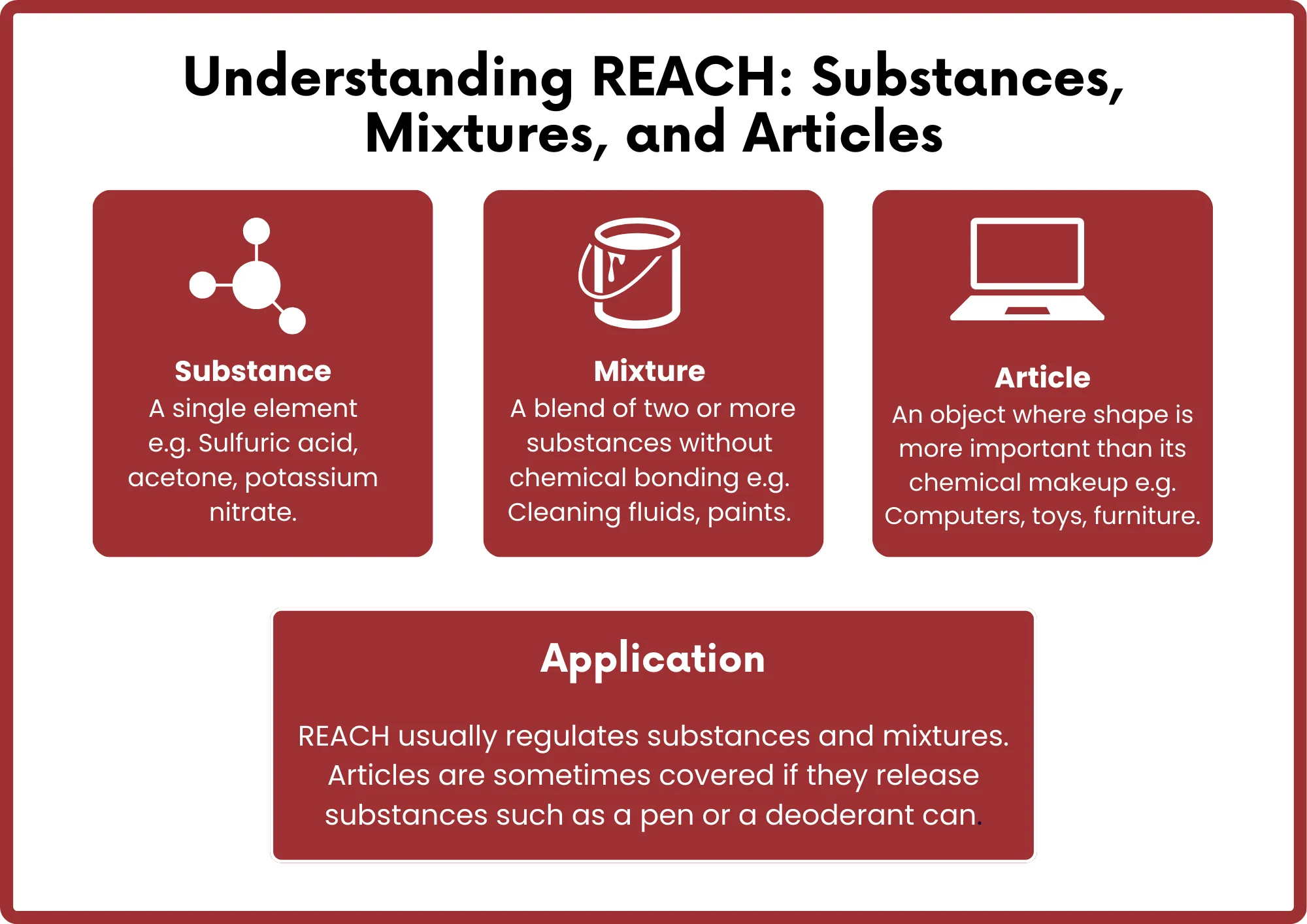
What Are the REACH Testing Items?
reach testing is a type of chemical testing required for products exported to the European Union. Before diving into the details of REACH testing, let's first understand what it is.
REACH stands for Regulation concerning the Registration, Evaluation, Authorization, and Restriction of Chemicals. It is an EU regulatory framework established to control chemicals and has been in effect since June 1, 2007.

What Are the REACH Testing Items
If your products are intended for export to the EU and other countries, ensuring material safety and environmental compliance is crucial. The reach regulations set specific testing requirements, and obtaining reach certification can significantly enhance your product's competitiveness.
Currently, the list of Substances of Very High Concern (SVHC) under REACH regulations has been gradually updated, now including 181 substances.
- For organic products, full REACH testing covers 174 items.
- For inorganic products, the required testing includes 55 items.
Knowledge Expansion
Below are some common product categories that require REACH testing. Additionally, these products may need other types of testing, which can be arranged as well.
1. Leather, Footwear, Clothing, and Textiles
Manufacturers and traders in this industry frequently encounter the following tests:
- AZO (Azo Compounds), REACH, ROHS, Phthalates, DMF (Dimethyl Fumarate), Heavy Metals (8 major), Formaldehyde, PAHs, Total Lead, Bisphenol A (BPA), Colorfastness, Abrasion Resistance, Tensile Strength, Durability Testing, Flammability Testing, UV Aging Resistance, Breathability, and Labeling Compliance.
2. Toys, Jewelry, Handicrafts, Hardware, and Accessories
Common tests include:
- EN71, gb6675, ASTM F963, cpsia, REACH, ROHS, Phthalates, Formaldehyde, UV Aging Resistance, CE certification, ccc certification.
3. Plastics, Inks, and Pigments
Relevant tests include:
- REACH, ROHS (6 substances), Phthalates, Halogen Testing, MSDS, PAHs, DMF, Heavy Metals (8 major), and Total Lead Testing.
4. Hardware Tools, Electronics, LED Lights, and Small Machinery
Common certifications and tests include:
- CE, FCC, CB, UL, GS, CCC, SASO, SONCAP, C-TICK, PSE, KC, SAA.
REACH Testing Process
Step 1: Application
- The applicant fills out an application form and provides a product component list.
Step 2: Quotation
- Engineers from the testing laboratory evaluate the material composition and determine the testing cost.
Step 3: Testing
- Once the applicant confirms the quotation, they sign the application form and service agreement and pay the full testing fee.
- The applicant then prepares and submits the required test samples (quantity to be coordinated with the testing team).
Step 4: Issuance of Report
- The testing process takes 5-7 working days (expedited processing available).
- Once the test is completed, a reach test report is issued.
Contact for REACH Certification
For REACH certification, please contact the JJR Laboratory engineers in China. Our company provides certification and testing services, including:
- EU CE Certification
- US FCC Certification
- US FDA Registration/Testing
- Middle East & Africa COC Certification
- Saudi Arabia SABER Certification
- Various product testing reports (quality inspection reports, chemical testing reports such as REACH and rohs reports)
Email:hello@jjrlab.com
Write your message here and send it to us
 What Are the Testing Items of California Propositi
What Are the Testing Items of California Propositi
 E-Cigarette EU TPD Testing
E-Cigarette EU TPD Testing
 Testing Certification for E-cigarettes Exported to
Testing Certification for E-cigarettes Exported to
 What is Amazon US CPC Certification?
What is Amazon US CPC Certification?
 UK Toy Safety Regulation Standard EN 71-13
UK Toy Safety Regulation Standard EN 71-13
 What is EU UFI Registration?
What is EU UFI Registration?
 EU UFI Registration for E-cigarette E-liquid
EU UFI Registration for E-cigarette E-liquid
 How to get the MSDS Report for Electronic Cigarett
How to get the MSDS Report for Electronic Cigarett
Leave us a message
24-hour online customer service at any time to respond, so that you worry!




